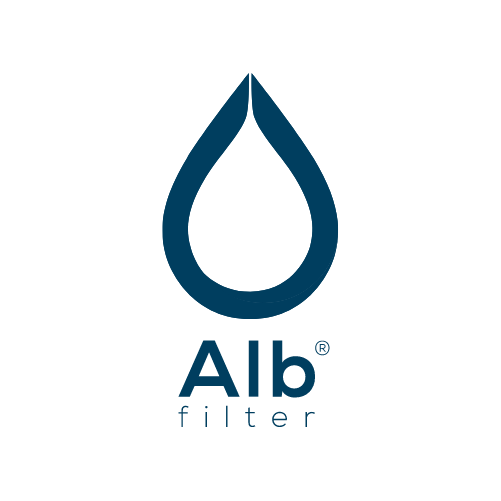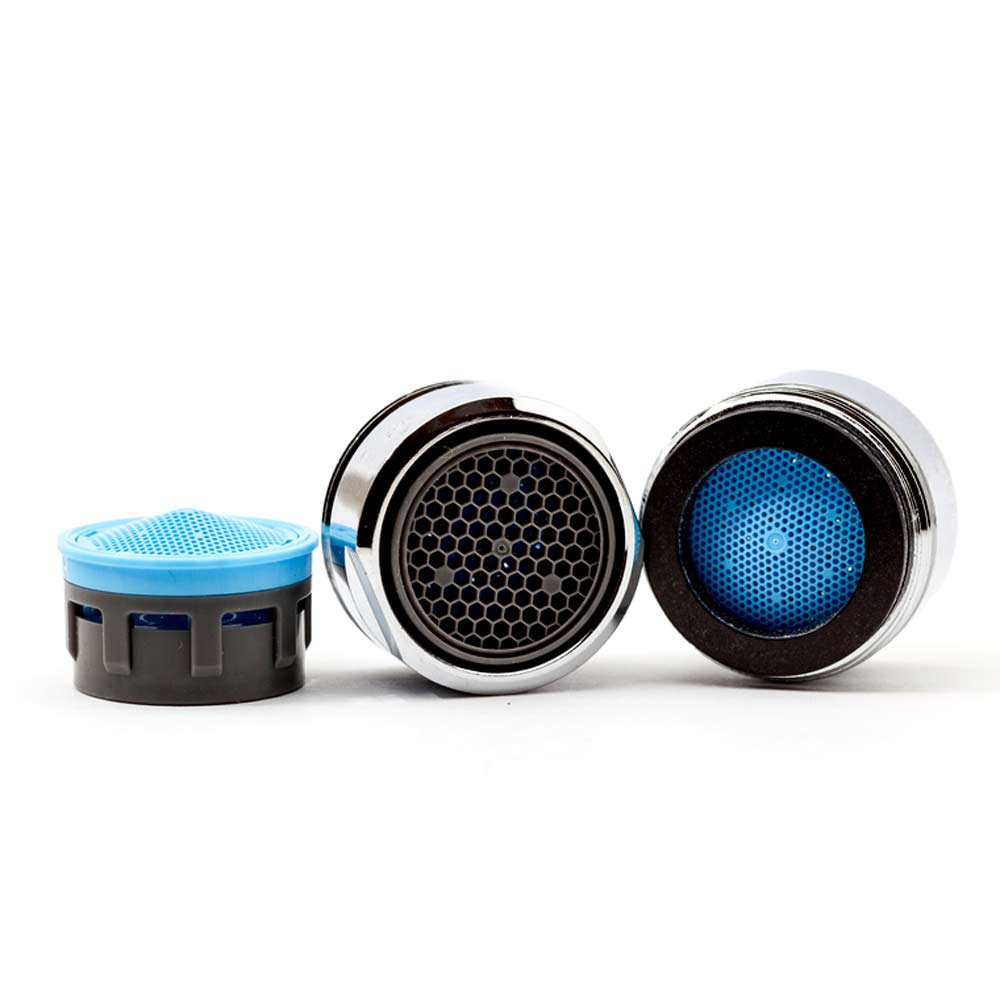
CAMPING GUIDE
Fill up with water on the go
Practical tips for your trip with the motorhome
Filling up with water on the road is an essential part of life in a motorhome, whether you're planning an adventure in the great outdoors or embarking on an extended tour across the country. A reliable supply of clean and safe drinking water is crucial for the health and well-being of all travelers. In this comprehensive Guidebook , you'll find the best practices and safe methods for filling your water tank, complemented by important information on different water sources and their quality. From identifying safe water points to effective water filtration and treatment to water tank maintenance, we cover everything you need to know for a worry-free water supply on the road.
The importance of clean drinking water when traveling
The importance of clean drinking water when traveling can hardly be overestimated. Water is not only the basis of all life, but also a crucial factor for a healthy and fulfilling travel experience. When traveling, especially in a motorhome where freedom and flexibility are paramount, a regular supply of clean water becomes both a challenge and a priority.
Clean drinking water plays a dual role: on the one hand, it is used to meet our daily fluid requirements and, on the other, it is essential for preparing meals and personal hygiene. The quality of available water has a direct impact on health. Contaminated water can cause a variety of illnesses, from mild indigestion to serious infections, which can not only make the journey unpleasant but also dangerously disrupt it.
When traveling, we often rely on water sources whose quality we cannot easily assess. It is therefore important to rely on proven methods of water purification and treatment. Modern water filters and treatment solutions can help remove potential contaminants and ensure that the water is safe to drink. At the same time, the ability to effectively purify and store water allows us greater independence from local utilities and the freedom to explore more remote areas.
Finding safe water sources
Identifying safe water sources is essential for your health when traveling. Trusted sources include public water points that are regularly inspected and campsites with certified water quality. Before using natural sources such as rivers or lakes, the water should be filtered and treated to avoid contamination. Pay attention to clear indications of drinkability and use, for example, a water quality test to obtain certainty about the prevailing water quality. Find out about local recommendations in advance and use a camping water filterto ensure that your water is free from contaminants.
The different types of water sources
When supplying new water, you have the option of using different water sources. Each has both advantages and disadvantages. To ensure that the water that is used is clean and safe, it is important to know the characteristics of the different water sources:
Public water points
Public water points can often be found in towns, at service stations or cemeteries. They generally offer drinking water quality, as the water is usually treated and regularly tested. However, it is important to check the cleanliness of the tap and ensure that no cross-contamination can occur through hoses or connections. Public water points are a reliable option for filling up the water tank safely.
Campsites and rest stops
Many campsites and rest stops have their own supply points for drinking water. These are specially designed for travelers and offer a convenient way to fill up with water. Here too, attention should be paid to the purity of the taps and it is advisable to obtain information on water quality from the operator. If you are not staying at a campsite, a fee is usually charged for using the water.
Natural sources
Natural sources such as rivers, lakes or mountain springs can be tempting, but without appropriate treatment they pose risks. The quality of water from natural sources can vary greatly and be affected by environmental factors. Before use, the water should always be filtered to eliminate possible impurities and pathogens. When drawing water from natural sources, consideration must also be given to environmental protection.
Purchase of bottled drinking water
As a last resort or for emergencies, bottled drinking water can also be purchased. This is particularly useful in areas where safe water sources are not available. However, buying bottled water, especially disposable plastic bottles, should remain the exception due to the environmental impact and should be replaced by more sustainable solutions such as a water filter should be replaced.
Apps for finding water sources on the go
Thanks to digital tools, finding water sources is easier than ever. Apps such as Park4Night, StayFree and WaterMap offer extensive databases and user reviews of water points that are accessible to travelers.

Park4Night is not only a great resource for finding places to stay overnight, but users can also share information about water sources near their pitches. These community contributions make it easy to find clean water when traveling.

StayFree goes one step further by being specially tailored to the needs of the vanlife community and offering details of water points as well as pitches. Its user-friendly layout and targeted information make it an indispensable tool for every vanlifer.

Drinking water on the move is a website or app that lists more than 1,100 wells and drinking water sources in Germany.
These digital tools are not only handy for finding the nearest water source, but also for making travel planning more efficient and environmentally conscious. By using apps, travelers can ensure they have access to clean water while helping to reduce the use of plastic bottles.
Assessment of water quality
Water quality can be assessed on the basis of various parameters such as clarity, smell, taste and, in particular, microbiological and chemical constituents. It is advisable to test water sources before use, especially if you are traveling or drawing from natural sources. Drinking water test kits that check for bacteria, viruses, heavy metals and chlorides are helpful tools to ensure water safety. A thorough assessment helps to avoid health risks and contributes to a worry-free travel experience.
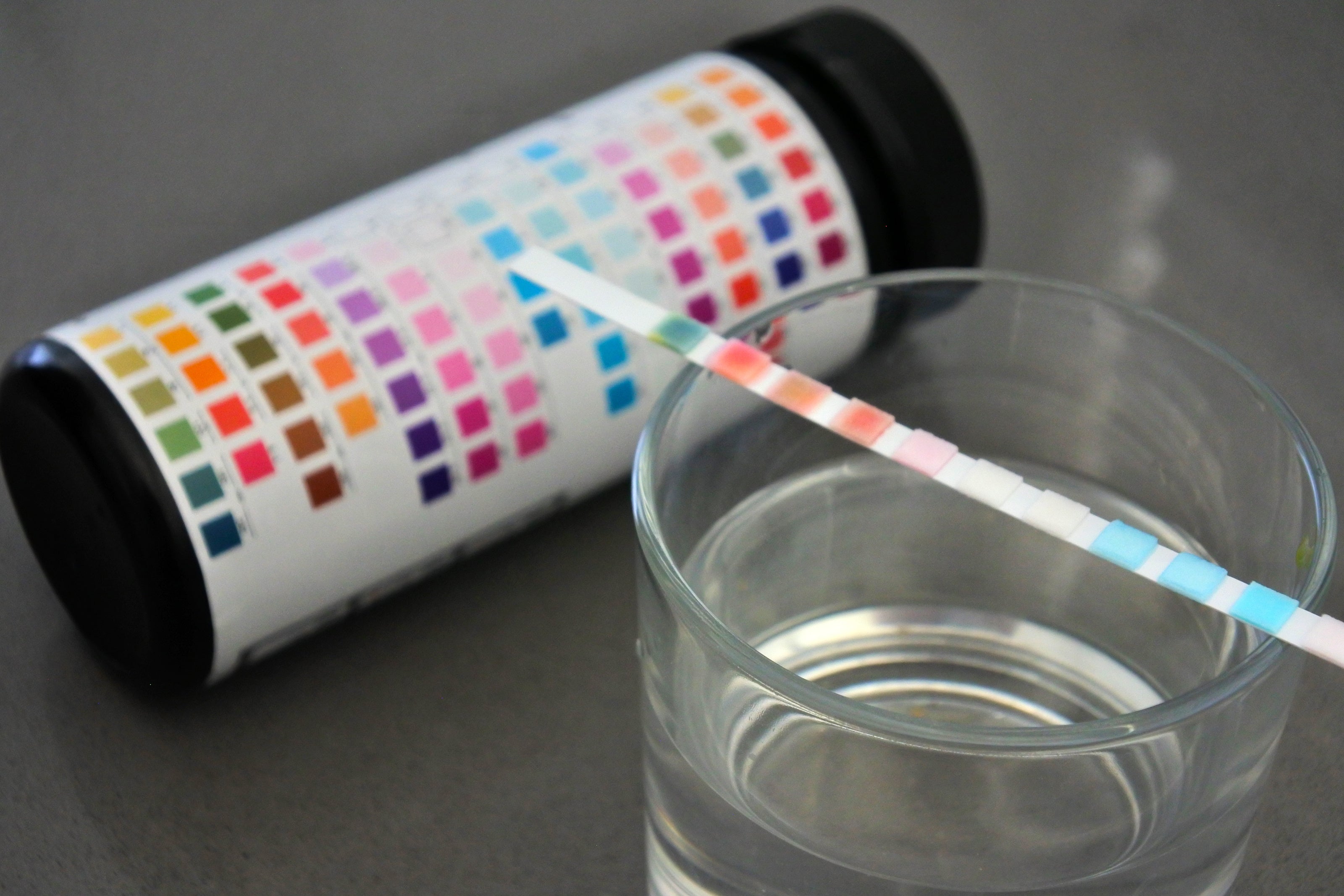
Different types of water tanks for motorhomes
Water tanks play a central role in the self-sufficient water supply of motorhomes and campers. They make it possible to take a vital resource with you when traveling. Depending on the design, size and intended use of the motorhome, there are different types of water tanks on board. These include, among others:
The fresh water tank
The fresh water tank is essential for the supply of drinking and service water. It stores the clean water that is used for cooking, washing, showering and the toilet. The size of the fresh water tank can range from small units of around 20 liters for compact campervans to large tanks of over 200 liters for more extensively equipped motorhomes. The choice of size depends on the number of travelers, the duration of the trip and the individual
The gray water tank
Dirty water from the shower, sink and kitchen is collected in the gray water tank. It is less contaminated than black water and can, under certain circumstances, be reused for flushing the toilet or for irrigation, provided it is treated accordingly. The gray water tank is an important part of the water management system in a motorhome. The size of the tank is often matched to the capacity of the fresh water tank to ensure a balance between the availability of clean water and the capacity for waste water.
The black water tank
This tank is designed to hold waste water from the toilet and requires careful handling and disposal to avoid health risks and environmental pollution.
The mobile water tank
Additional mobile water tanks offer a practical solution for travelers who want to be self-sufficient for longer periods of time or who are travelling to regions with limited access to water. These can be easily filled and stowed away and filled into the built-in water tank when required.
Best practices for filling up with water
If you're traveling with your motorhome and it's time to fill up with water, good preparation is essential. Here you will find best practices for filling up with water so that you can always drive safely and cleanly:
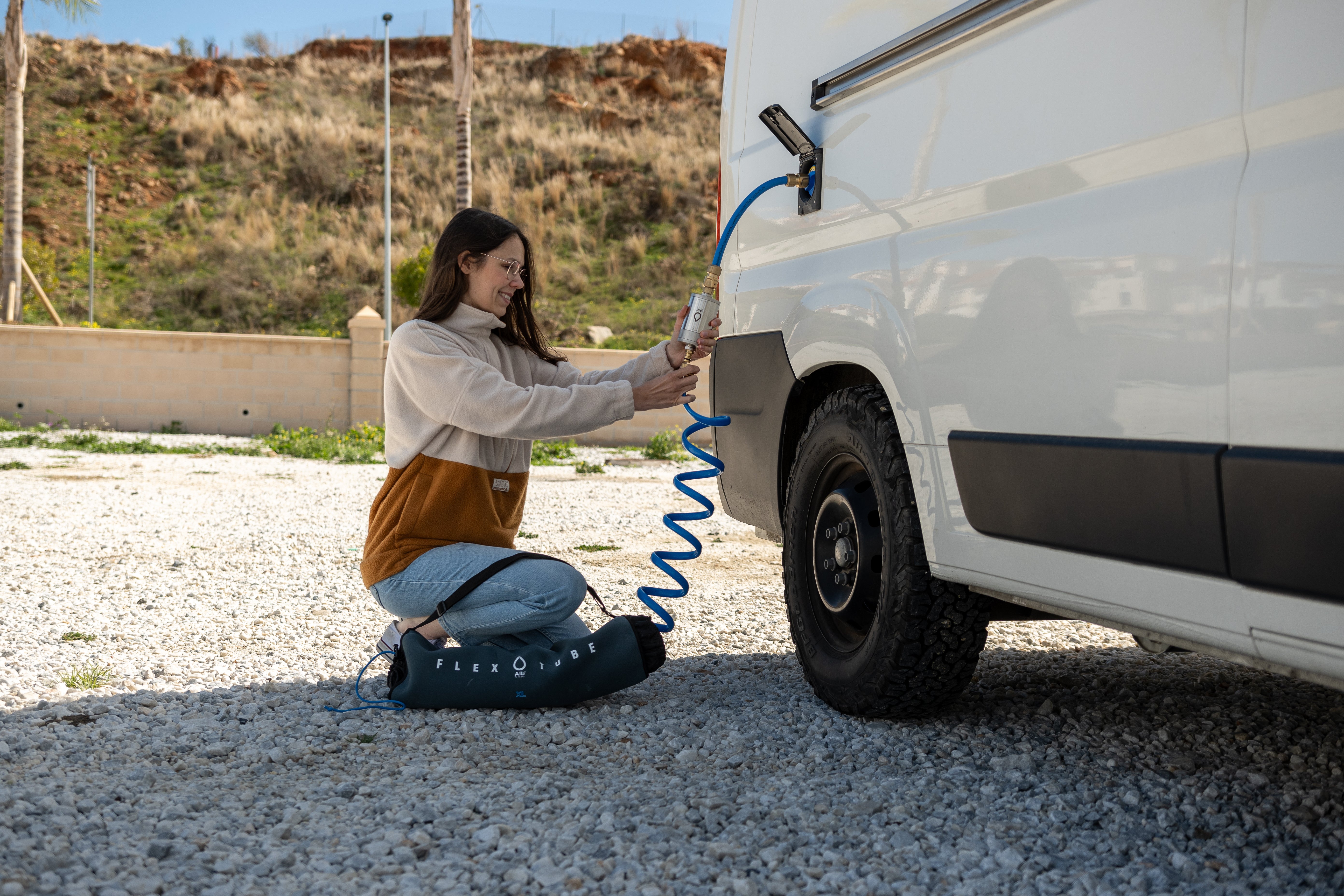
Preparation and necessary equipment
Before you get started, make sure you have all the necessary utensils to hand. This includes clean water hoses that are only used for drinking water; flex hoses, for example, are also ideal, as they can be adjusted to the required length so that they are not dragged around on the dirty floor. A reliable water filter can provide additional safety. You should also have adapters for different water connections with you so that you can react flexibly to the conditions at filling stations.
Step-by-step instructions for filling the tank safely
- Search for the nearest suitable water source using one of the apps mentioned above and find out about the local water quality in advance if possible
- Check the water source for cleanliness and whether it is labeled as drinking water.
- Allow the water to flow briefly to remove any impurities in the hose.
- Connect your cleaned water hose to the tap. Use an adapter if necessary.
- Attach a mobile water filter or filling filter between the hose and the filler neck of your motorhome.
- Fill the tank slowly to avoid pressure surges and splashing water.
- Take care not to overfill the tank and close the filler neck tightly.
GOOD TO KNOW!
A permanently installed water filter, which filters the water from the fresh water tank again shortly before it is drawn from the tap, can provide additional safety. This is because longer standing times or high temperatures can increase the growth of bacteria and pathogens in the water tank.
Tips for avoiding contamination
- Avoid placing the water hose directly on the floor and always use a clean hose.
- Clean and disinfect all your water equipment regularly, including hoses and filters.
- Do not touch the part of the hose that comes into contact with the water with unwashed hands.
- Store hoses and adapters dry and clean in a closed container.
By following these best practices, you can ensure that the water quality in your motorhome remains high and that you always have access to clean drinking water on your travels.
Water filtration and treatment
Water filtration and treatment in motorhomes is an essential measure to ensure that clean and safe drinking water is always available. When traveling, the water quality can vary greatly depending on which of the various water sources you use, and it is not always guaranteed that the water you fill up with is free of impurities.
This is where water filters play a key role by removing pollutants, bacteria and other unwanted particles from the water. An effective water filter can help to minimize the risk of health problems and improve the taste of the water as, depending on the filter system, it is also able to remove chlorine almost completely from the water.
Regardless of whether you opt for an activated carbon filter, a ceramic filter or UV light filter, investing in a solid treatment system ensures the necessary safety. For detailed information on water treatment in motorhomes, including tips on choosing the right filter system and maintenance, visit our comprehensive Guidebook. Here you will find valuable information to help you ensure the water quality in your home on wheels.
Dealing with gray and black water
Proper disposal of gray and black water is a critical aspect of RV travel, both for the environment and for public health. Here are the key points you should consider when disposing of it:
- Only empty your tanks at designated disposal stations.
- Make sure to dispose of gray and black water separately if the disposal point provides separate systems for this.
- Wear protective gloves and avoid direct contact with waste water. Ensure that your hands and the equipment involved are thoroughly cleaned after disposal.
- Use separate, labeled hoses for the disposal of black water, which are not used for fresh water, to avoid cross-contamination.
- Keep the area around the disposal station clean and prevent waste water from spilling onto the floor.
- Find out about the local regulations on wastewater disposal, as these can vary from place to place.
- Store waste water disposal equipment separately from fresh water equipment to prevent mixing.
- Use biodegradable chemicals in your toilet and wastewater system, which are less harmful to the environment.
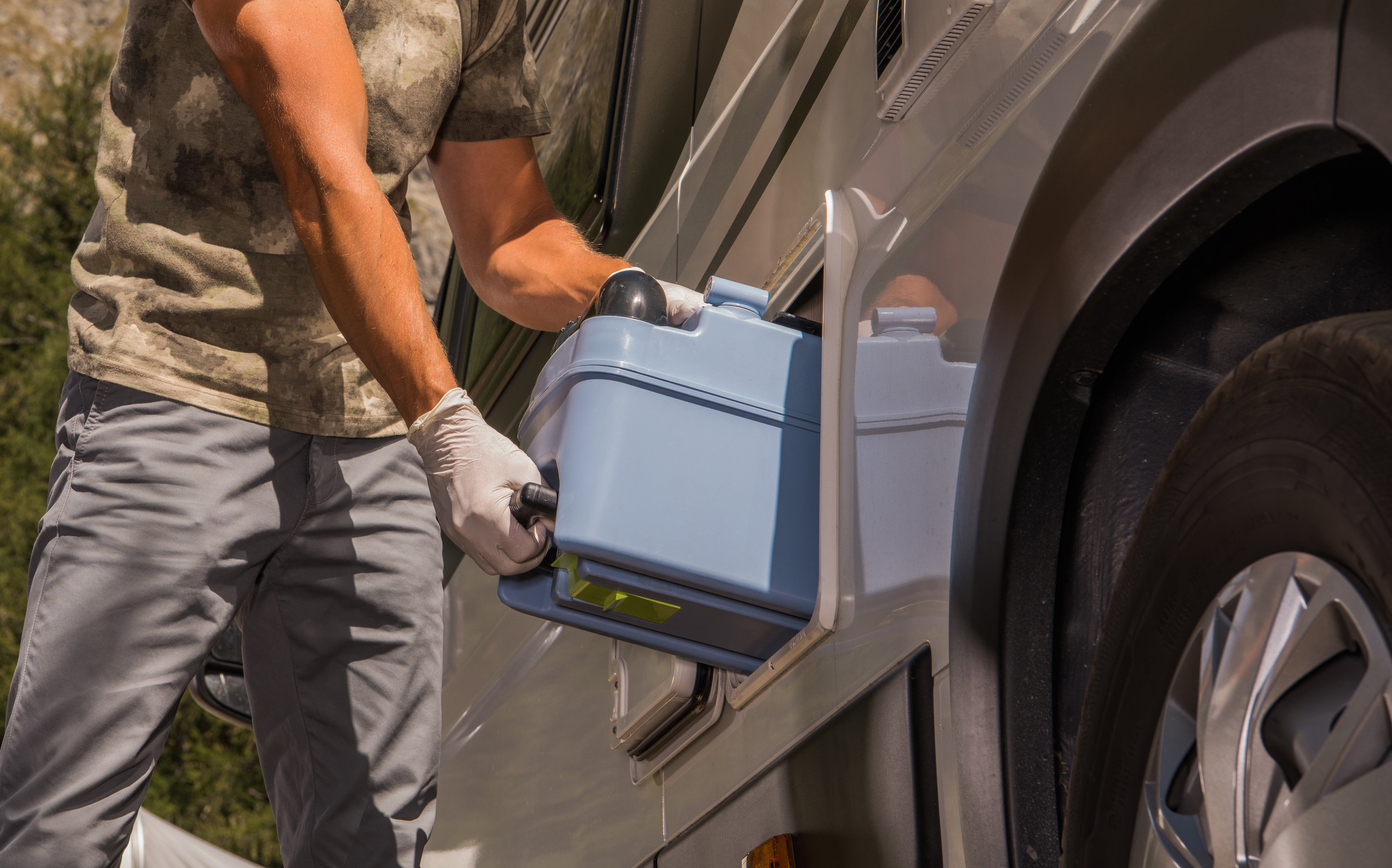
Cleaning the fresh water tank
Regular maintenance and cleaning of the water tank in your motorhome is crucial to ensure the water quality and keep the system free from bacteria and deposits.
Ideally, you should clean your motorhome's water tank at least twice a year, once at the beginning of the season and once at the end. However, if you are frequently on the road or traveling in warmer climates where bacterial growth occurs more quickly, you should clean the tank more often.
To clean and disinfect the water tank, you can use special tank cleaning agents from specialist retailers. These are designed to thoroughly clean the tank and eliminate germs. Alternatively, household products such as chlorine bleach or vinegar can be used, whereby you should pay close attention to the recommended mixing ratios in order to avoid material damage and ensure effective cleaning.
When using cleaning products, you must ensure that they are approved for use in drinking water systems and do not leave any harmful residues. You should also always follow the manufacturer's instructions for the cleaning products you choose and the specific instructions for your motorhome.
Tank cleaning step by step
- Empty: First drain the entire contents of the water tank and rinse it with clean water to remove any loose dirt.
- Add cleaning agent: Then fill the tank with a mixture of water and the cleaning agent. When using chlorine bleach, use about 250 ml per 100 liters of tank capacity.
- Allow to take effect: Leave the cleaning solution to work for several hours; for heavier soiling, leave it on overnight.
- Rinsing: Rinse the tank several times with clean water until you can no longer smell the detergent.
- Clean the pipes: Don't forget to also run through the water pipes to clean the entire system. If a water filter is installed in the system, remove it beforehand.
- Final test: After cleaning, test the water quality to ensure that there are no residues of cleaning agents in the water.
Legal aspects and responsibility
The regulations on drawing water from natural springs or public taps can vary greatly. In some regions, filling up with water is allowed without a permit, while elsewhere it is subject to strict restrictions or may cost a fee.
Before you fill up with water, find out about the local regulations. This can be done via official tourism websites, local authorities or special travel apps. Complying with these rules is not only a sign of respect for the country and its inhabitants, but also avoids possible penalties.
As far as environmental aspects are concerned, every traveler has a certain responsibility to the environment. Sustainable practices include filling up and disposing of water responsibly, using environmentally friendly cleaning products and disinfectants and minimizing water consumption overall. The use of natural resources should also always be handled with care in order to protect ecosystems and ensure the availability of clean water for the future.

